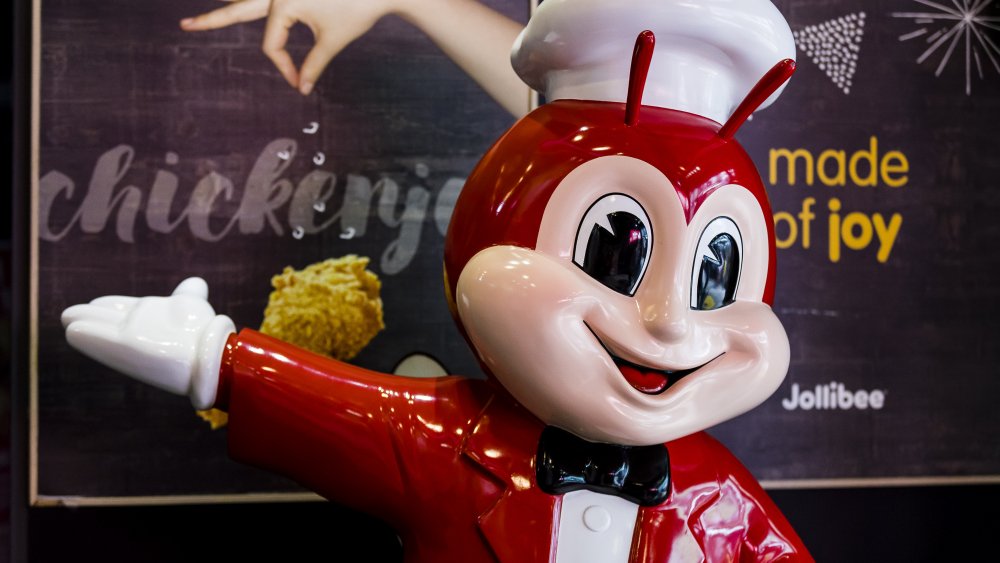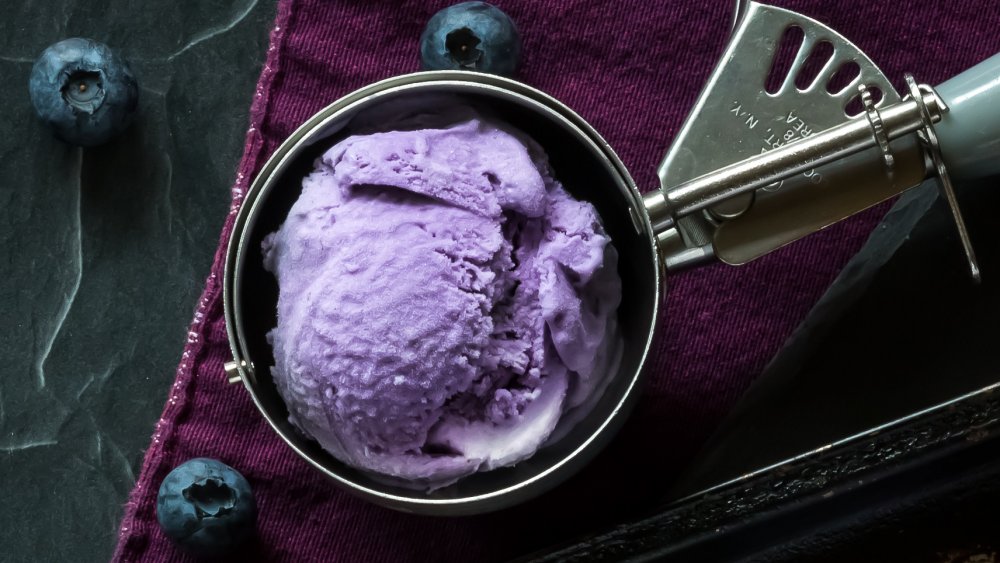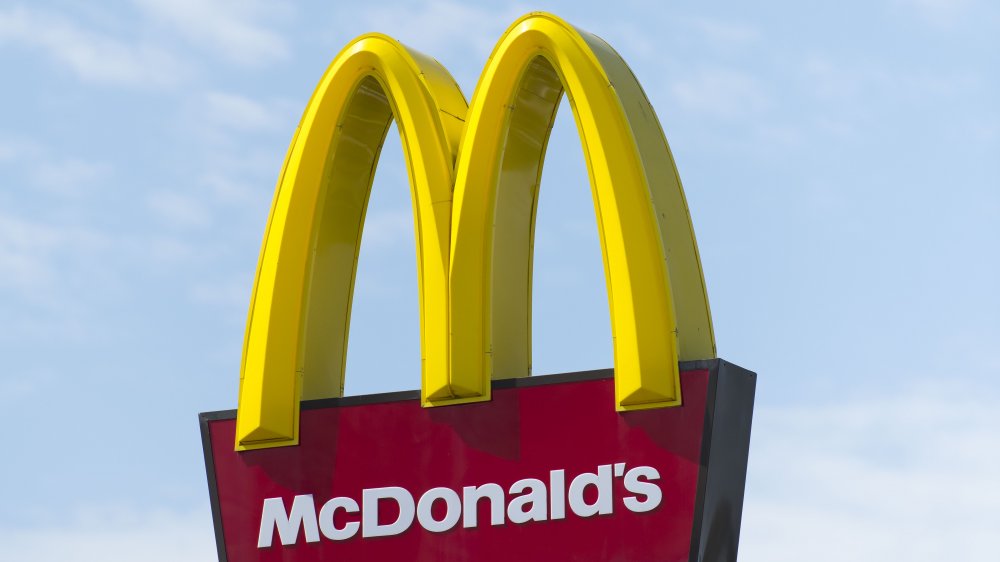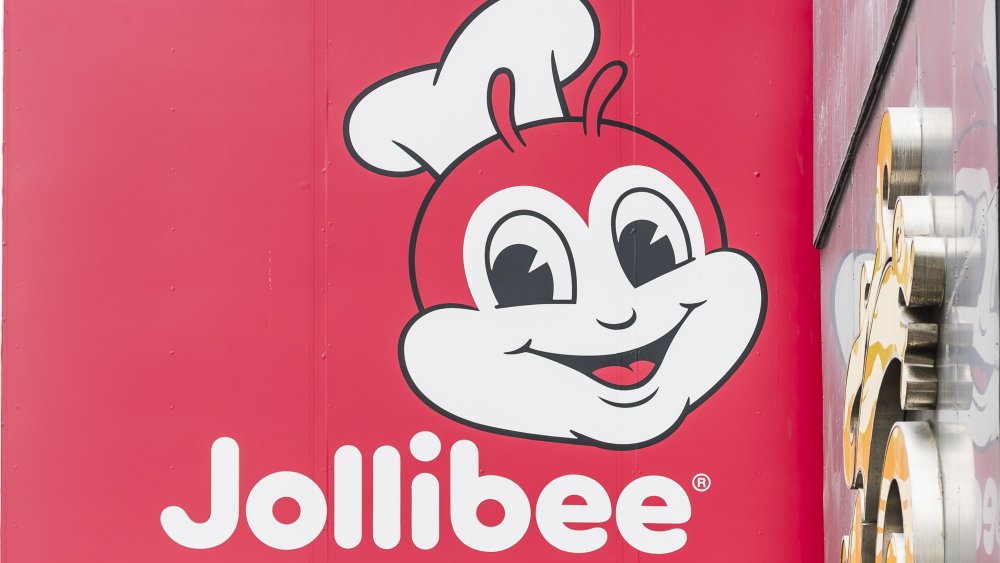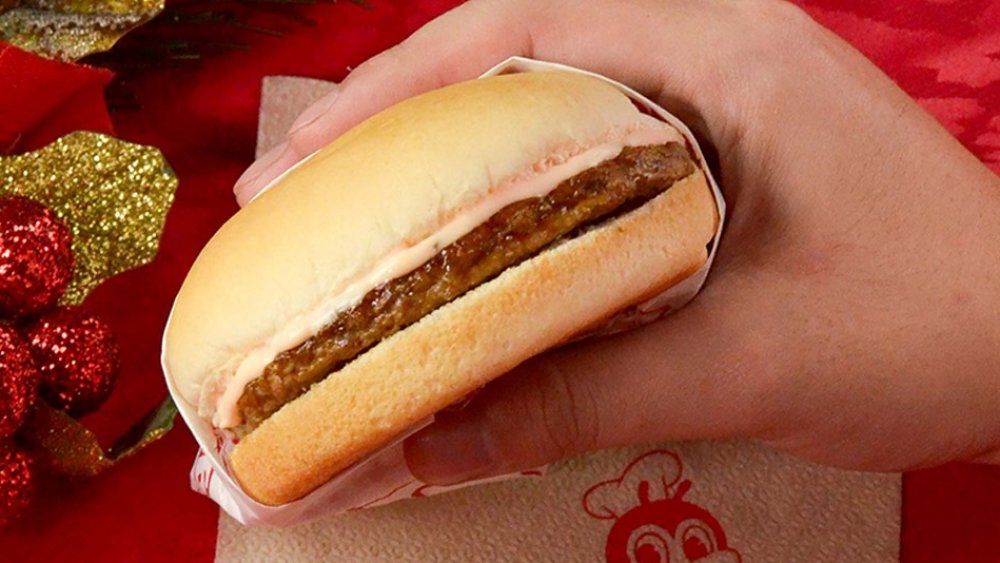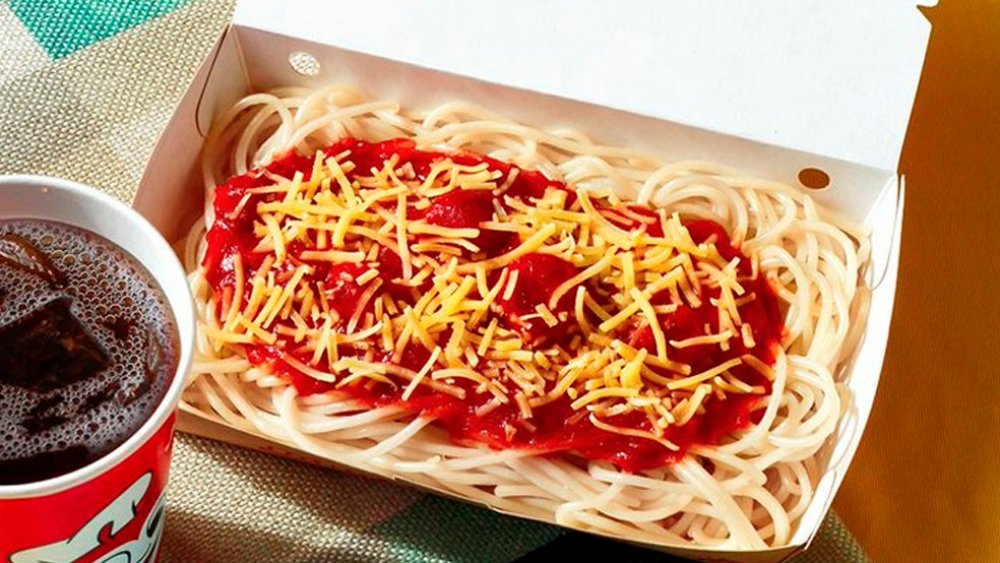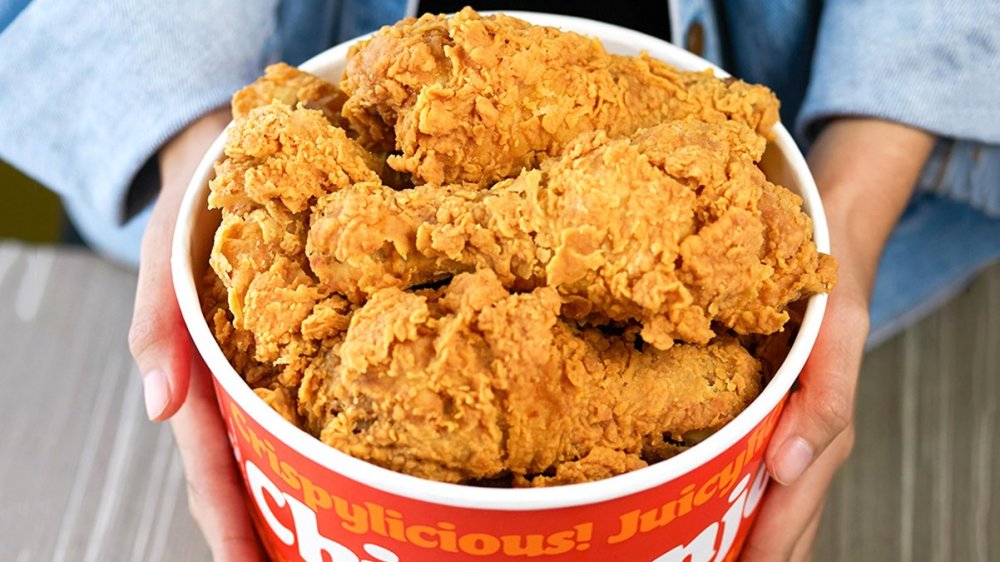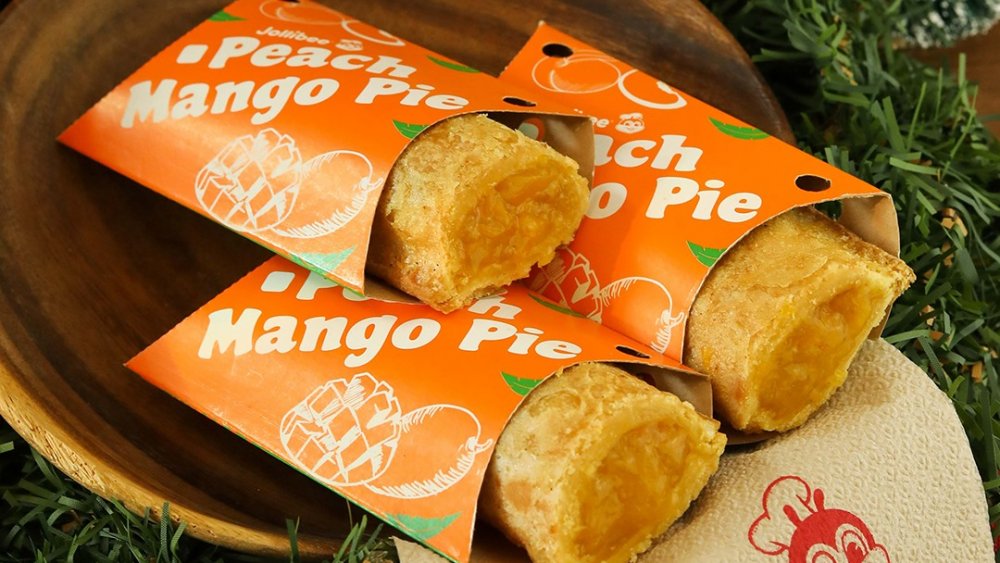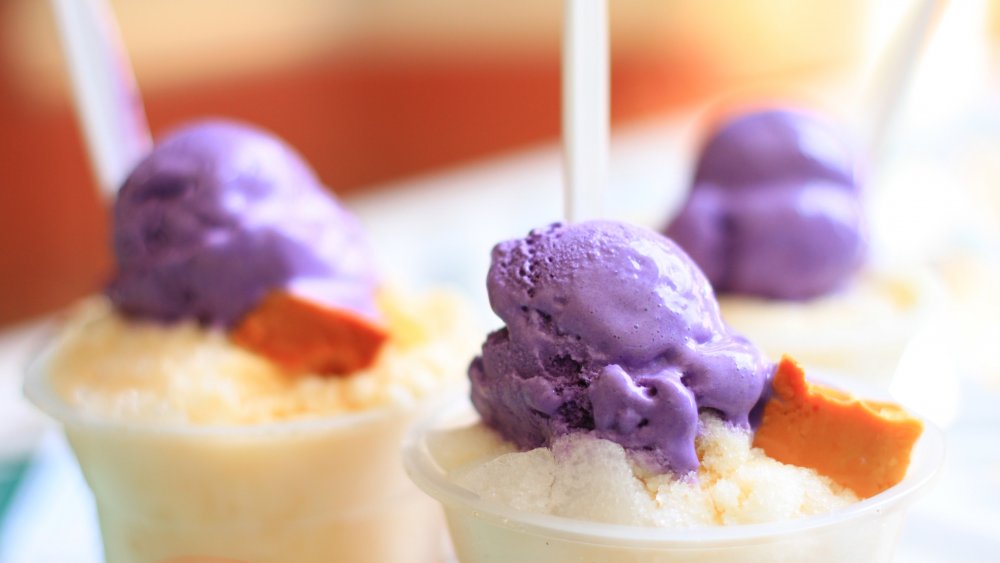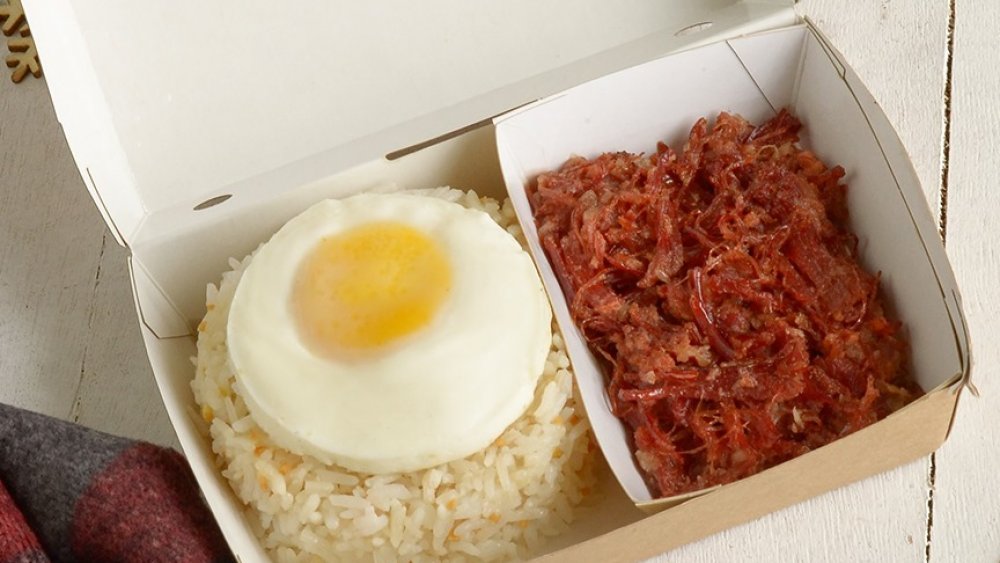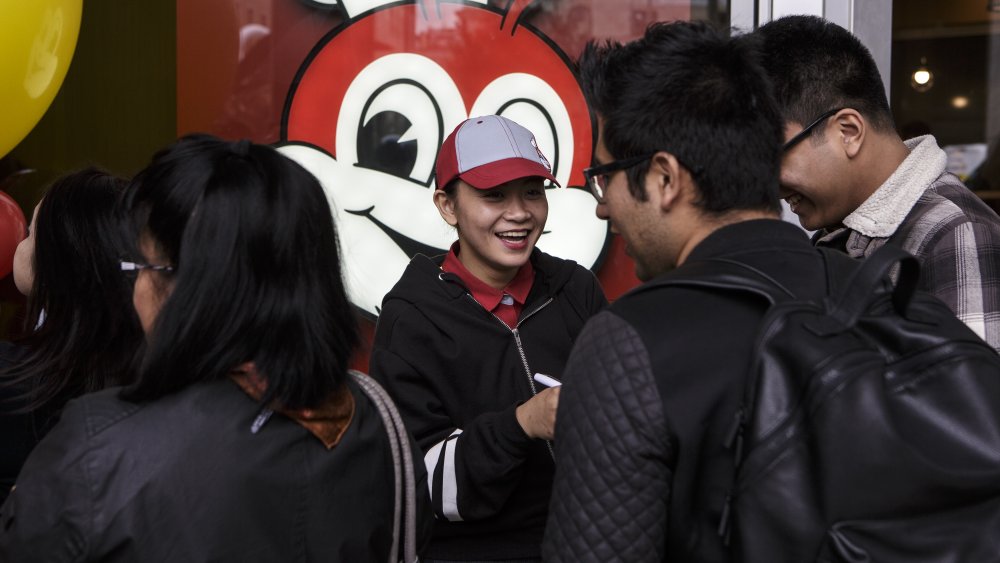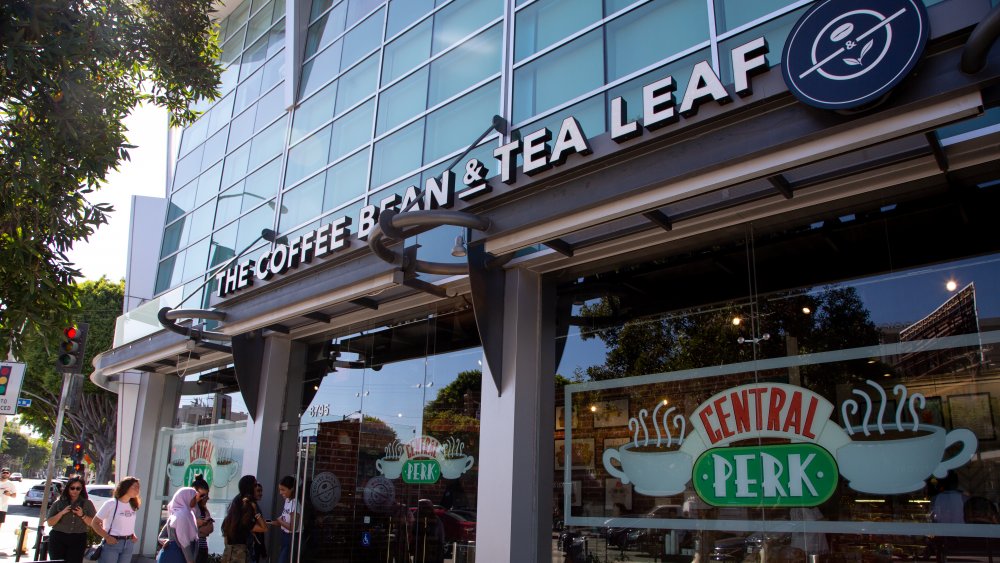The Untold Truth Of Jollibee
You've been to McDonald's, you're familiar with Wendy's, and you obsess over In N Out Burger, but if you're like most Americans, you've never been to Jollibee, the Filipino fast food chain that is rapidly expanding across the globe. Boasting a menu full of fast food with a Filipino twist, Jollibee is like KFC crossed with McDonald's — with a side of banana ketchup.
Jollibee started out in Manila in the late 1970s, and by the mid 1980s, they were dominating the local market. Jollibee opened their first international branch in Taiwan in 1986 and their first US location in Daly City, California in 1988. There are now over 1,300 Jollibee locations world-wide, mostly in areas with a large Filipino population. Jollibee was started by Tony Tan Caktiong, the son of immigrants from southeast China, who rose from humble beginnings to become self-made billionaire and Jollibee, a fast-food brand recognized world-wide, has become a Filipino success story.
Jollibee started out as an ice cream stand
In 1975, Tony Tan Caktiong was a recent chemical engineering graduate who invested his family's life savings to get into the ice cream business. After a tour of a Magnolia Ice Cream factory, Tan Caktiong was inspired to change careers, and he set up a franchise deal with Magnolia Dairy. Tony Tan Caktiong opened two ice cream stands, Cubao Ice Cream House and Quiapo Ice Cream House. He added sandwiches and hot items to the menu to respond to customer demand, and the non-ice cream items became the most popular items on the menu. In 1978, Tan Caktiong decided to get out of the ice cream franchise business, and Jollibee was born.
While Jollibee has been able to expand worldwide, Magnolia Ice Cream, one of the most recognizable brands in the Philippines and the oldest Asian ice cream company, is not able to sell its products in the United States due to a legal dispute with a copycat company also called Magnolia Ice Cream. In the United States, the Magnolia Ice Cream spots you see aren't the same as the one with ties to Jollibee.
Jollibee survived McDonald's
In 1981, just a few years after the first Jollibee opened, McDonald's arrived in the Philippines. Tony Tan Caktiong was told that he had two choices: sell Jollibee to McDonald's, or become a McDonald's franchise. Tan Caktiong decided that he would rather fight McDonald's. He traveled to the United States to study McDonald's, and they realized that McDonald's had them beat in every way, with one notable exception: taste. McDonald's appeals to an American palate, while Jollibee's is more suited to Filipinos' tastes. Jollibee brought their A-game to compete with McDonald's, and the Filipino chain now controls more of the market in Manila than their international competitors.
Jollibee's success in fighting back against an international mega corporation like McDonald's is a Filipino success story often held up in business school classrooms in the Philippines as a point of national pride. The Economist wrote of Jollibee in 2005: "If McDonald's is the Goliath of fast food, Tony Tan's Jollibee is its Filipino David."
Jollibee's logo is literally a jolly bee
When Jollibee realized that they would need to compete with large international corporations with slick branding and marketing, they gave the company a very smart makeover, starting with the name. Jollibee was first called called Jolibe — a name made up by the founder — but the spelling was changed so that the closely resembled the words "jolly" and "bee."
The dapper bee wears a chef's hat, a tuxedo jacket, and a big smile, and is also known as "Juicy J." Management consultant Manuel Lumba designed the Jollibee logo with influences from Mickey Mouse, comic books, and Ronald MacDonald. Why a bee? Lumba chose a bee because they are hard workers, and they are associated with honey, a symbol for the sweeter things in life. Lumba and Tony Tan Caktiong also thought of the bee as representing the Filipino people: hard-working, good-hearted, busy and cheerful.
Jollibee's flagship product is the Yumburger
The Yumburger came about after Tony Tan Caktiong noticed that people would line up for burgers more than they would for ice cream. In addition to the basic Yumburger, there's the Yumburger with cheese, the Aloha Yumburger which is served with a slice of pineapple, and the Big Yumburger. The Yumburger was Jollibee's first signature product, and for a while, Jollibee locations were called "Jollibee Yumburger." The first advertising campaign showed the Jollibee mascot presenting the burger, claiming that the burger came from Yumburg, "a place between here and nowhere."
In addition to the Yumburger, Jollibee also sells the Burger Steak, which is similar to a Salisbury steak. The Burger Steak features fried hamburger patties that are smothered in mushroom gravy, served with a side of rice and/or mashed potatoes. In 2018, Jollibee added a twist the classic Burger Steak and debuted the Bistek Burger Steak, a hamburger covered in onions and a savory steak sauce inspired by the Filipino dish bistek tagalog.
Jollibee is known for fast food spaghetti
While some Jolliebee menu items use regular ketchup, they are well-known for their banana ketchup spaghetti. That's right — banana ketchup on spaghetti. Filipino spaghetti is the Pinoy answer to spaghetti and meatballs. It's hearty comfort food, and thanks to the banana ketchup, it's quite sweet. Banana ketchup isn't really ketchup, but rather a clever substitute for tomato ketchup. The people in the Phillipines were introduced to tomato ketchup by traveling Americans, but the area didn't have many tomatoes. Enterprising Filipinos mixed bananas, vinegar, and sugar to create a ketchup stand-in, which was then dyed red.
Jollibee's spaghetti, known as Jolly Spaghetti, consist of noodles, ground meat, sliced hot dogs, banana ketchup, and cheese. Banana ketchup spaghetti, or Filipino spaghetti, is a staple party food in the Philipines. Jollibee didn't invent it, but their version set the standard for cheap and widely available Filipino spaghetti. The McDonald's version, the McSpaghetti, bombed in the United States but is a hit in the Philippines.
Jollibee serves another noodle dish in addtion to the Jolly Spaghetti. Pancit palabok, also known as "Fiesta noodles," is a rice noodle dish topped with pork chicarron, sautéed pork, tinapa flakes, shrimp, and sliced hard boiled eggs.
Jollibee is famous for their fried chicken
Jollibee's hand-breaded fried chicken, known as "Chickenjoy," is one of the chain's most popular dishes, and while Americans might not associate fried chicken with spaghetti, the Jollibee Chickenjoy and spaghetti combo is classic Pinoy comfort food. The Chickenjoy marinade is a trade secret. Every order of chicken comes with a side of gravy, regardless of whether or not you choose to order rice or potatoes. Jollibee also serves a spicy Chickenjoy, and chicken dippers, which are smaller pieces of boneless fried chicken tenders.
In 2014, a computer glitch led to a slow-down in Jollibee's production. The chain had to temporarily shut down 72 stores and popular menu items, most notably Chickenjoy, were temporarily unavailable. Jollibee lost six percent of their sales for the first week of August. The lack of Chickenjoy spawned the hashtag #chickensad. KFC took advantage of their rivals' lack of fried chicken, and put out an ad that read, "#Chickensad? There's a so good solution for that!"
Jollibee's Peach Mango Pie puts other fast food pies to shame
Jollibee's Peach Mango pie's most obvious American equivalent is the McDonald's apple pie, but unlike McDonald's, Jollibee still deep-fries their delicious hand pies. If you miss the perfect crunch of an old school, fried McDonald's apple pie, head to the nearest Jollibee's!
The Peach Mango Pie is delicious, but sadly, Americans have to miss out on some other amazing Jollibee pies, barring a trip to the Philippines. In addition to the Peach Mango Pie, Jollibee locations in Manila also sell ever-changing pie flavors. This includes a version of the Filipino snack, turon, and the Choco-Mallow pie, which is essentially a s'more in hand pie form. Jollibee also sells savory pies such as a tuna pie, spicy tuna pie, and cheese and corned beef pie, but these savory hand pies are not available in North America and the tuna pie is only available in the Philippines during Lent. A cult item that is only available seasonally, you could say that the Jollibee tuna pie is the Filipino answer to the McRib.
Speaking of dessert, try the Halo Halo from Jollibee
Jollibee has their own version of the traditional Filipino desert called halo-halo, which is a concoction of shaved ice, sweetened beans, fruit and condensed milk. Jollibee's halo-halo is also topped with a piece of flan and a scoop of ice cream. Halo halo is Tagalog for "mix-mix."
The ice cream that Jollibee uses and is found in most halo-halo is bright purple, and that color comes from ube, a purple sweet potato. Ube is a staple ingredient in the Philippines, and while there's no written record of precisely when ube first made its way into Pinoy cuisine, the first Spanish/Tagalog dictionary, published in 1613, mentions ube, and a 1918 cookbook (the second earliest cookbook in the Philippines) contains a recipe for pumpkin jam, which most likely refers ube jam. Ube desserts have recently exploded in popularity, with thousands of pictures of bright purple cookies, cupcakes and ice cream under the #ube tag on Instagram.
Instead of an Egg Mcmuffin, try Jollibee's breakfast menu, Breakfast Joys
Like the rest of their menu, Jollibee's breakfast options take some familiar fast food breakfast items and serve them with a Pinoy twist. In keeping with the fast food chain's jolly image, the breakfast menu is called "Breakfast Joys." All of Jollibee's breakfast items come with seasoned rice and a fried egg. They serve tapa (beef tenders), tocino (sweet pork), longanisa (pork sausage), and corned beef.
Just like the famous tuna pie, there are some Jollibee breakfast favorites that are not available in North America. Jollibee sells a pretty standard fast food breakfast sandwich in the Philippines, but they also serve a pancake sandwich. The best-selling pancake sandwich features a fried egg, bacon, and cheese, served in between two pancakes. You could say that Jollibee's pancake sandwich is their slightly healthier answer to KFC's double down, which used boneless fried chicken tenders in place of a bun.
Jollibee is rapidly expanding
While the vast majority of Jollibee franchises are located within the Philippines, the company has branched out into the North American, South East Asian, and European markets. The company's strategy has focused on marketing to Filipino workers abroad.
When a new Jollibee location opens in the US, enthusiastic fans have lined up outside for hours waiting to get their coveted Chickenjoy or Jolly Spaghetti. When Jollibee opened a Tampa location in January, 2020, ardent fans of the chain, many of them Filipino or Filipino-American, lined up starting at 4:30 a.m., finally entering the store to confetti and cheers at 9 a.m. Tampa is Jollibee's second Florida location. It's first Florida location, in Jacksonville, served 3,000 customers on its opening day in 2017. Many fans of the chain rejoiced at having another, closer location. Jollibee plans to open 150 locations in the US and 100 in Canada by 2023.
Jollibee Food Corp goes beyond Jollibee
Jollibee Food Corp began acquiring other restaurant chains in 1994 when it bought out Greenwich Pizza, a pizza and pasta chain in the Philippines. In the early 2000s, Jollibee also acquired three more Philippines-based food chains: Chinese fast food restaurant Chowking, the bakery chain Red Ribbon, and the barbecue chicken restaurant Mang Inasal. The company also has control over foreign divisions of Burger King, Dunkin, Pho 24, and Hard Rock Cafe, as well as others.
In 2019, Jollibee Food Corp. bought the LA-based Coffee Bean and Tea Leaf for $350 million. The previous year, the company also bought a majority stake in another US chain, Smashburger. Before acquiring Coffee Bean, 73 percent of Jollibee sales came from the Philippines, but with the acquisition of Coffee Bean and more planned acquisitions, the company hopes to lift it's revenue in China and the United States both to 30 percent, cutting its reliance on the domestic market.
Will Coffee Bean and Tea Leaf start selling spam sandwiches and banana ketchup spaghetti any time soon? Probably not, but maybe this international expansion of Jollibee Food Corp will bring us closer to having a stateside tuna pie.
